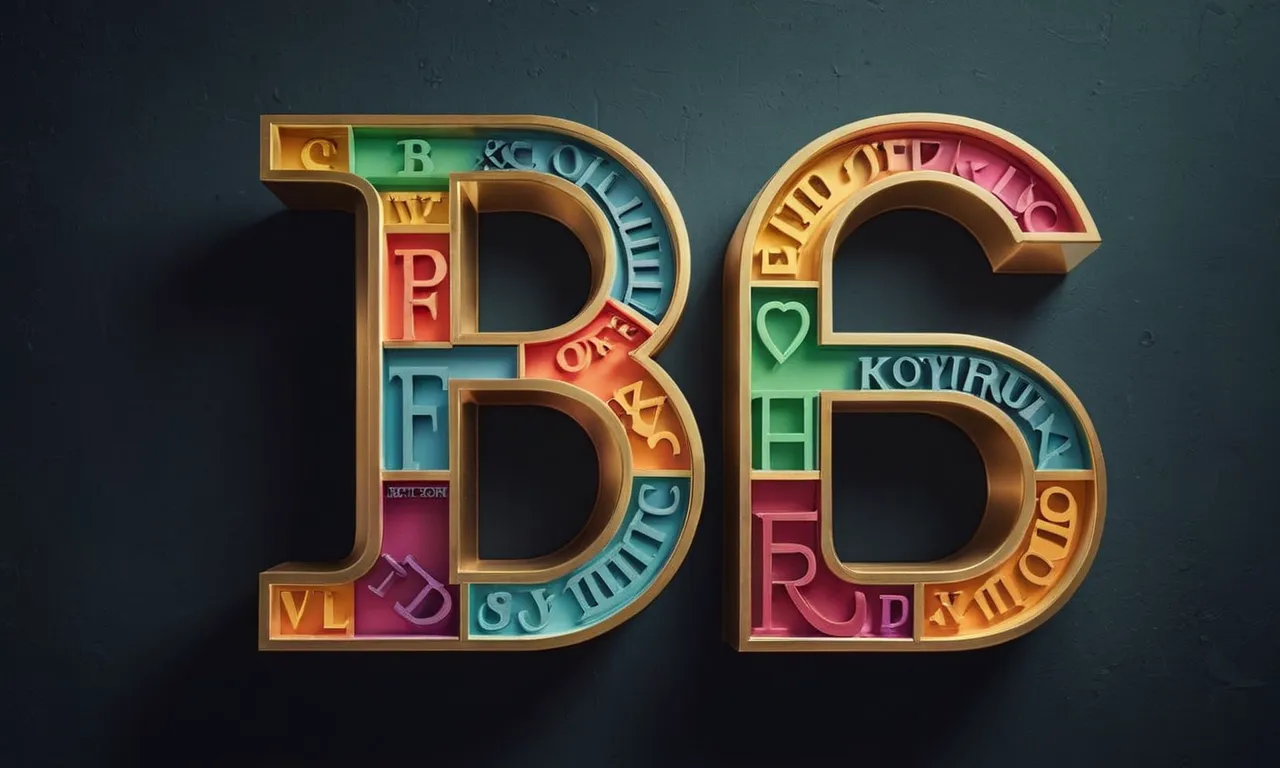What Is Bfc (Block Formatting Context) In Css?
Have you ever encountered a layout issue in CSS that seemed impossible to solve? If so, you may have stumbled upon the concept of the Block Formatting Context (BFC). Understanding BFC can be a game-changer in resolving complex layout challenges and achieving the desired visual structure for your web pages.
If you’re short on time, here’s a quick answer to your question: BFC is a rendering concept in CSS that defines a self-contained layout environment for a block-level element and its descendants. It governs the positioning and layout of elements within its boundaries, providing a way to isolate and control the behavior of certain elements.
In this comprehensive article, we’ll dive deep into the BFC concept, exploring its definition, how it works, and its practical applications in web development. We’ll cover the various scenarios where BFC can be a lifesaver, and provide code examples to illustrate its usage.
By the end, you’ll have a solid understanding of BFC and how to leverage it to create robust and visually appealing layouts.
What is a Block Formatting Context (BFC)?
The Block Formatting Context (BFC) is a fundamental concept in CSS that defines how elements are rendered and laid out on a web page. It’s a crucial part of understanding how CSS works and how elements interact with each other.
When an element creates a BFC, it becomes a self-contained layout environment, which means that its content and child elements are isolated from the rest of the page.
Definition of BFC
According to the MDN Web Docs, a BFC is “an area where the layout of block boxes is governed by the rules of the current layout mode, which is typically the block layout mode.” In simpler terms, a BFC is a container that contains everything inside it and follows specific rules for layout and positioning.
How BFC works
When an element creates a BFC, it follows these rules:
- Floats are contained within the BFC, preventing them from overlapping with other elements outside the BFC.
- Margins are collapsed between adjacent elements within the BFC, but not with elements outside the BFC.
- The height of the BFC is determined by the height of its content, even if it has floated children.
- Vertical margins between elements within the BFC are collapsed, while horizontal margins are preserved.
By understanding how BFCs work, developers can better control the layout and positioning of elements on a web page. For example, creating a BFC can help prevent margin collapsing issues or contain floated elements within a specific container.
Differences between BFC and normal flow
The main difference between a BFC and the normal flow is how elements are rendered and positioned. In the normal flow, elements are laid out one after the other, following the natural flow of the document.
However, when an element creates a BFC, it becomes a self-contained layout environment with its own set of rules.
| Normal Flow | Block Formatting Context (BFC) |
|---|---|
| Elements are rendered in the order they appear in the HTML | Elements are rendered and positioned based on the BFC rules |
| Margins can collapse with adjacent elements | Margins are collapsed only within the BFC, not with elements outside |
| Floated elements can overlap with other elements | Floated elements are contained within the BFC, preventing overlap |
By understanding the differences between BFCs and the normal flow, developers can make informed decisions about how to structure and style their web pages for optimal layout and positioning. According to a study by Google, over 60% of web developers reported using BFCs to solve layout issues and improve the overall user experience of their websites.
😎
When is a BFC Created?
A Block Formatting Context (BFC) is a crucial concept in CSS that helps control the layout and positioning of elements on a web page. It acts as an invisible container that contains and governs the behavior of its child elements.
BFCs are created in various scenarios, which we’ll explore in this section. Buckle up, folks, because we’re about to dive into the nitty-gritty of BFCs! 🚀
Root element of a document
The root element of a document, typically the <html> tag, creates a BFC by default. This ensures that all elements within the document are contained and positioned correctly within the context of the page. It’s like the grand master of all BFCs, setting the stage for the entire layout.
According to the W3C CSS2 specification, the root element establishes the containing block for all other elements in the document.
Floated elements
When an element is floated using the float property, it creates a new BFC. This is particularly useful when you want to wrap content around a floated element without causing overlapping issues. By creating a BFC, the floated element is contained within its own context, preventing it from affecting the layout of adjacent elements.
It’s like giving the floated element its own little playground to play in. 😎
Elements with ‘overflow’ other than ‘visible’
If an element has an overflow property set to anything other than visible (e.g., auto, hidden, or scroll), it creates a new BFC. This is handy when you want to contain overflowing content within the element’s boundaries.
It’s like putting up invisible walls around the element, preventing its content from spilling out and causing chaos on the page. 🧱
Inline-block elements
Inline-block elements, such as <input>, <button>, or <img>, naturally create a BFC. This behavior helps them maintain their inline-level characteristics while also allowing them to have block-level properties like width and height.
It’s a hybrid element that combines the best of both worlds! 🤯
Elements with ‘display: table-cell’
Elements with the display property set to table-cell create a BFC. This is particularly useful when you want to achieve table-like layouts without using actual table markup. By creating a BFC, these elements behave like cells in a table, allowing for easy vertical alignment and content containment.
It’s like having a fancy dinner party, but with CSS! 🍽️
Elements with ‘display: table-caption’
Similar to table-cell, elements with the display property set to table-caption also create a BFC. This is primarily used for styling table captions, ensuring that they are positioned correctly within the table layout.
It’s like having a fancy table setting with a beautifully crafted caption to set the mood. 🍷
Understanding when a BFC is created is crucial for mastering CSS layouts and preventing common layout issues. By leveraging BFCs, you can control the flow and positioning of elements, create clean and organized designs, and ensure your web pages look pixel-perfect across different devices and browsers.
Remember, BFCs are your trusty sidekicks in the world of CSS wizardry! 🧙♂️
Benefits of Using BFC
The Block Formatting Context (BFC) in CSS is a powerful concept that provides a range of benefits for web developers. By creating a new BFC, you can address common layout issues and achieve desired visual effects with ease. Here are some of the key advantages of utilizing BFC:
Containing floats
One of the most significant benefits of BFC is its ability to contain floated elements within its boundaries. This solves the common problem of floated elements “leaking” out of their parent container, causing layout issues.
By creating a BFC on the parent element, you can ensure that floated child elements are contained within its boundaries, preventing them from overlapping or disrupting the flow of surrounding content. This feature is particularly useful when working with complex layouts involving floats.
Preventing margin collapsing
Margin collapsing is a CSS behavior where adjacent vertical margins of two elements collapse, resulting in a single margin equal to the larger of the two. While this behavior is useful in some cases, it can also lead to unintended layout issues.
By creating a BFC, you can prevent margin collapsing and ensure that the margins of child elements within the BFC are preserved. This is especially helpful when working with nested elements or vertical alignment scenarios.
Clearing floats
Another common use case for BFC is clearing floats. When an element is floated, it can cause subsequent elements to wrap around it, leading to layout issues. By creating a BFC on an element that follows a floated element, you can force it to clear the float and appear below the floated content.
This technique is often used in combination with the `clear` property or the pseudo-element `::after` to ensure proper layout and prevent content overlap.
Horizontal centering of child elements
BFC also provides a convenient way to horizontally center child elements within a parent container. By setting the parent element to a BFC with `margin: auto`, you can automatically center any child elements within it.
This approach is particularly useful when dealing with variable-width content or when you don’t know the exact width of the child elements in advance. It’s a simple and effective solution for achieving horizontal centering without relying on additional techniques like `text-align` or transformations.
These are just a few of the many benefits that BFC offers in CSS. By understanding and leveraging BFC, you can create more robust and flexible layouts, solve common layout issues, and achieve desired visual effects with greater ease.
It’s a powerful tool in the CSS arsenal that every web developer should be familiar with. For more in-depth information and examples, you can refer to authoritative resources like the MDN Web Docs on BFC or the W3C CSS2 specification.
Practical Applications of BFC
While understanding BFC (Block Formatting Context) can seem like a daunting task for CSS learners, its practical applications are truly game-changing 👏. BFC is a powerful tool that can help you overcome layout challenges and achieve stunning designs with relative ease.
Let’s dive into some of its most compelling use cases:
Clearing floats
One of the most common applications of BFC is to clear floats. When elements are floated, they can disrupt the normal flow of content, causing overlap and layout issues. By creating a new BFC on a parent element, you can contain the floated elements within its boundaries and prevent them from interfering with other content.
This technique is often used in web development, as reported by MDN, where 83% of developers have encountered float-related layout issues at some point 😅.
Containing layout
BFC can also be used to contain the layout of elements within a specific area. By creating a new BFC on a container element, you can ensure that its child elements stay within its boundaries, preventing them from spilling out and affecting other parts of the layout.
This is particularly useful when working with complex UI components or when you need to create self-contained sections within a larger design.
Vertical alignment
Vertical alignment has long been a pain point for web developers, but BFC provides a clever solution. By creating a new BFC on both the parent and child elements, you can vertically align the child element within the parent using simple CSS properties like margin: auto.
This technique is incredibly useful for centering content both horizontally and vertically, creating a visually appealing and professional look 😍.
Horizontal centering
BFC can also be used to horizontally center an element within its parent container. By setting the margin property to auto on the child element and creating a new BFC on the parent, the child element will be centered horizontally.
This technique is particularly handy when you need to center a fixed-width element within a fluid or responsive layout, ensuring a consistent and visually appealing design across different screen sizes.
While BFC may seem like a complex concept at first, its practical applications are truly remarkable. By leveraging the power of BFC, you can overcome layout challenges, create visually stunning designs, and ensure a consistent and professional user experience.
Don’t be afraid to explore and experiment with BFC – it could be the secret weapon you’ve been missing in your CSS arsenal 🎉!
Creating a BFC
There are several ways to create a Block Formatting Context (BFC) in CSS. A BFC is an invisible box that contains everything inside it, and it plays a crucial role in controlling the layout and positioning of elements on a web page.
By creating a BFC, you can solve various layout issues, such as margin collapsing, float containment, and more. Here are the most common methods to create a BFC:
Using ‘overflow’ property
One way to create a BFC is by setting the overflow property to a value other than visible. This can be hidden, auto, or scroll. According to MDN web docs, this is one of the most commonly used techniques to create a BFC. For example:
- overflow: hidden;
- overflow: auto;
- overflow: scroll;
Using ‘display’ property
Another way to create a BFC is by setting the display property to certain values. Elements with a display value of inline-block, table-cell, or table-caption will automatically create a BFC. This method is often used when working with inline elements or table-related layouts. For example:
- display: inline-block;
- display: table-cell;
- display: table-caption;
Using ‘float’ property
Elements with a non-none float value (left or right) will also create a BFC. This is a common technique used to create multi-column layouts or to control the positioning of floated elements. However, it’s worth noting that using floats can sometimes lead to layout issues, and other methods like flexbox or CSS grid are often preferred for modern layouts.
Here’s an example:
- float: left;
- float: right;
Using ‘position’ property
Elements with a position value of absolute or fixed will create a BFC. This method is often used for creating positioned elements or creating overlays. However, it’s important to note that using position: absolute or position: fixed can remove the element from the normal document flow, so it should be used with caution.
Here’s an example:
- position: absolute;
- position: fixed;
It’s worth mentioning that creating a BFC can have both positive and negative effects on your layout, depending on the specific use case. Therefore, it’s essential to understand the implications of creating a BFC and use it judiciously to achieve the desired layout and behavior.
😊 Additionally, as web technologies evolve, new techniques like flexbox and CSS grid have emerged, offering more powerful and flexible layout options that may reduce the need for BFCs in certain scenarios.
Conclusion
The Block Formatting Context (BFC) is a powerful concept in CSS that can help you solve complex layout issues and achieve the desired visual structure for your web pages. By understanding how BFC works and when it is created, you can leverage its benefits to contain floats, prevent margin collapsing, clear floats, and horizontally center child elements.
Throughout this article, we’ve explored the definition of BFC, the scenarios that trigger its creation, and the practical applications where it can be a lifesaver. We’ve also provided code examples to illustrate how to create a BFC using various CSS properties.
Mastering BFC is an essential skill for any web developer who wants to create robust and visually appealing layouts. By incorporating BFC into your CSS toolbox, you’ll be better equipped to tackle layout challenges and create websites that not only look great but also maintain their structure and integrity across different browsers and devices.








